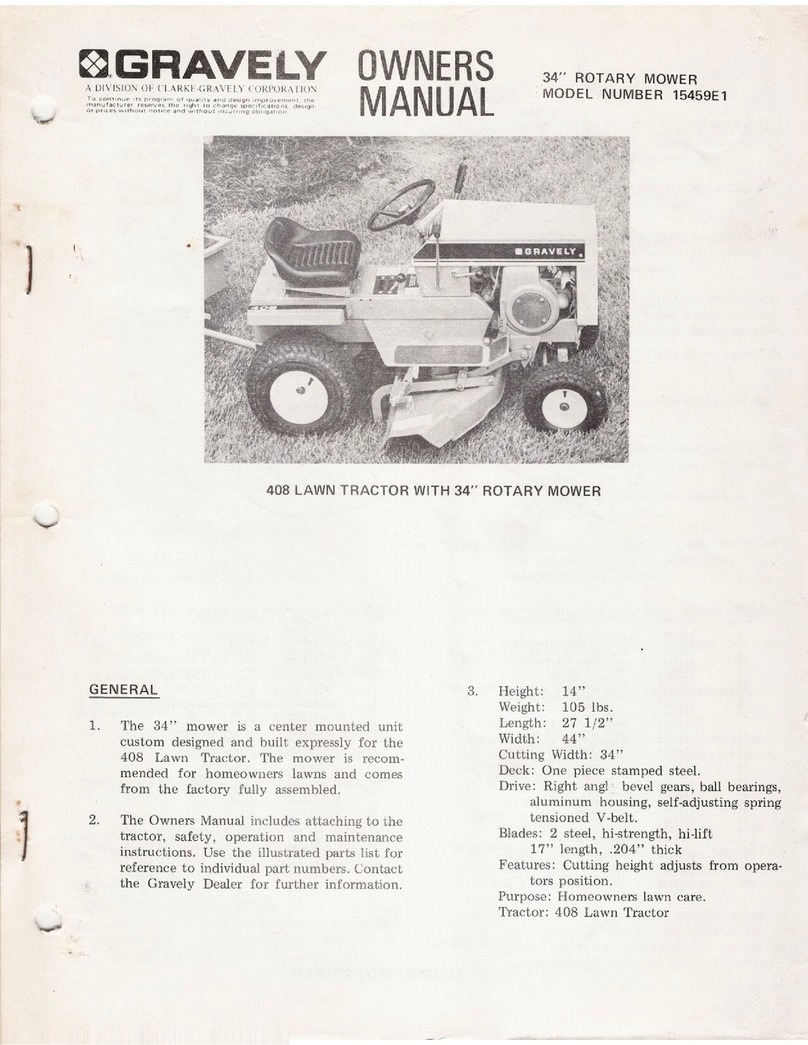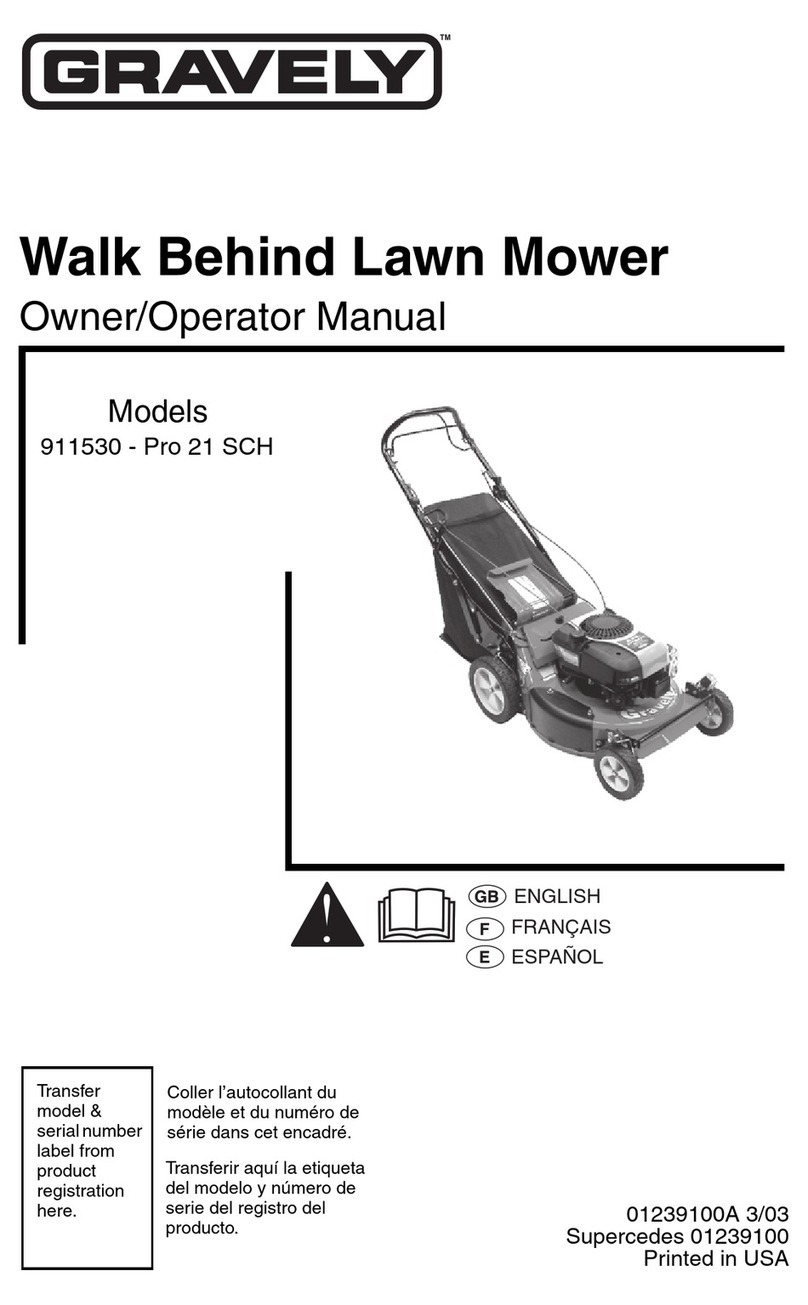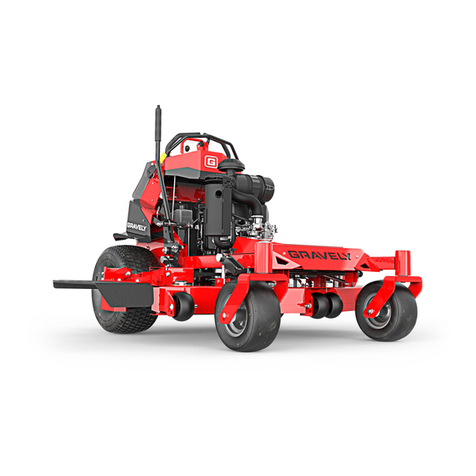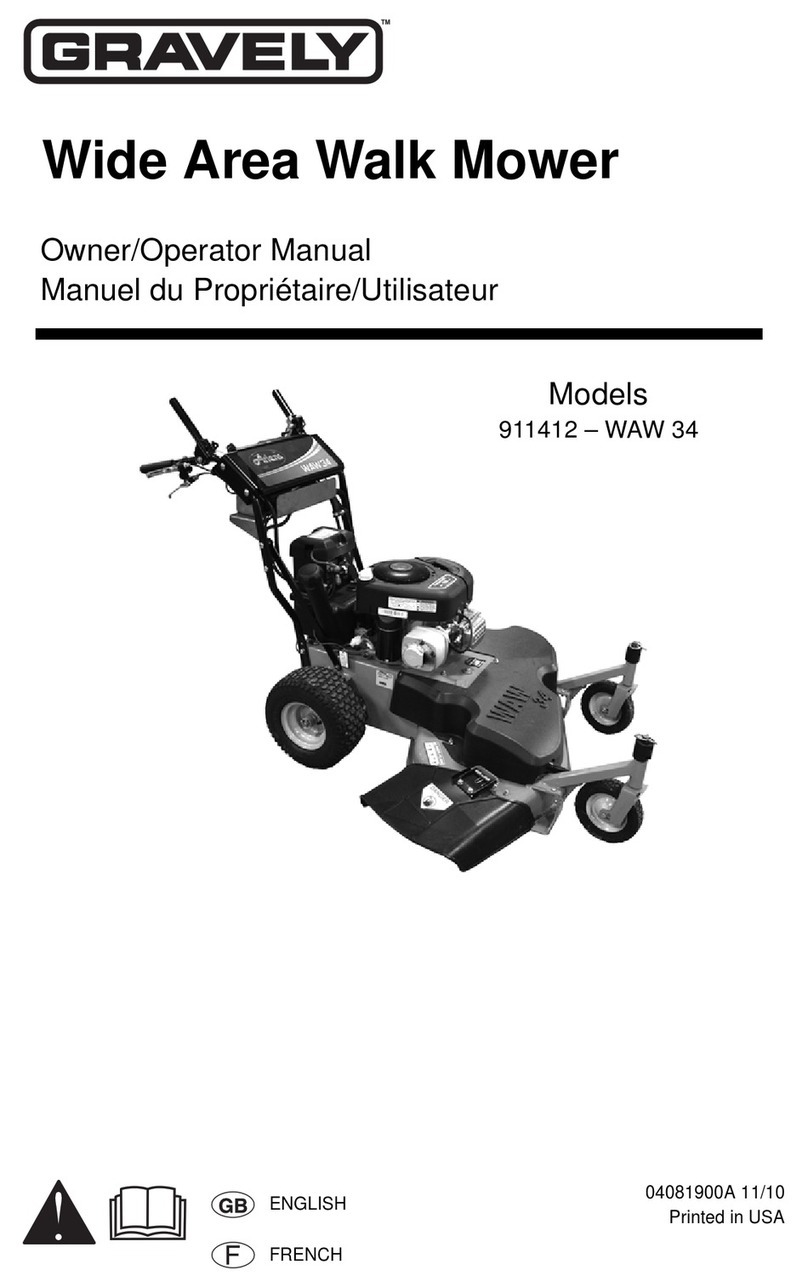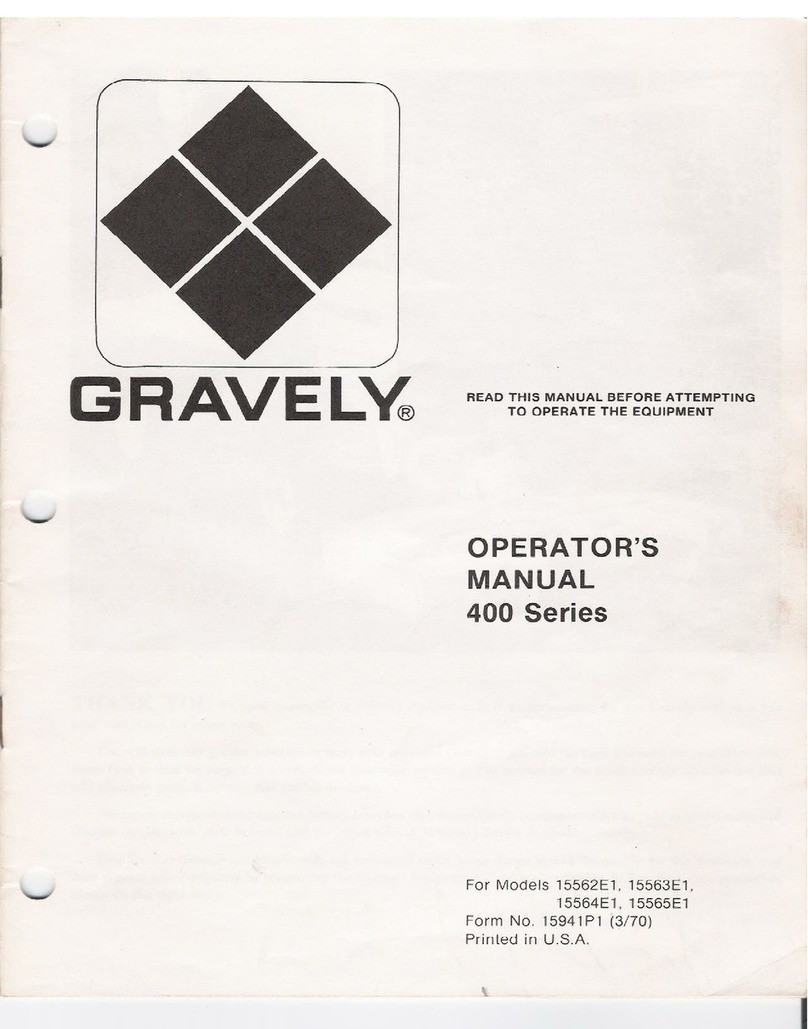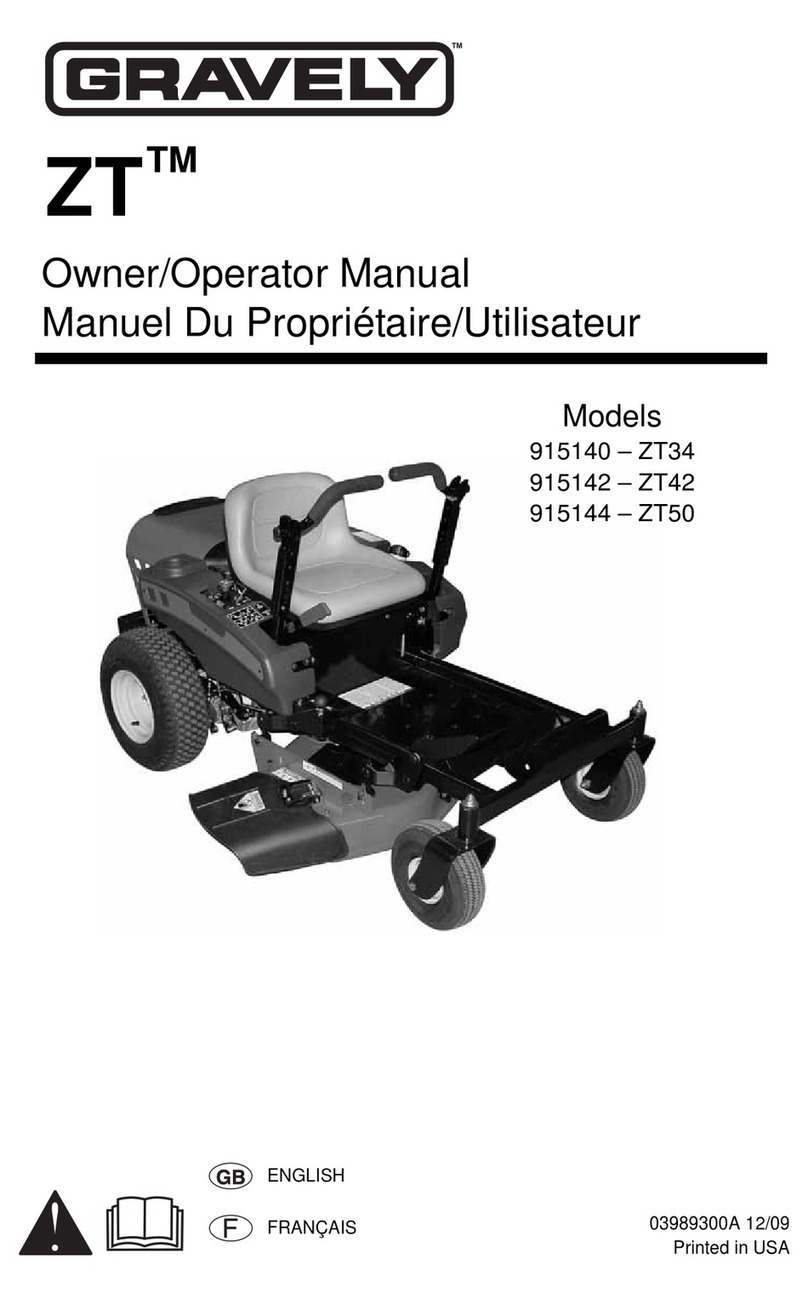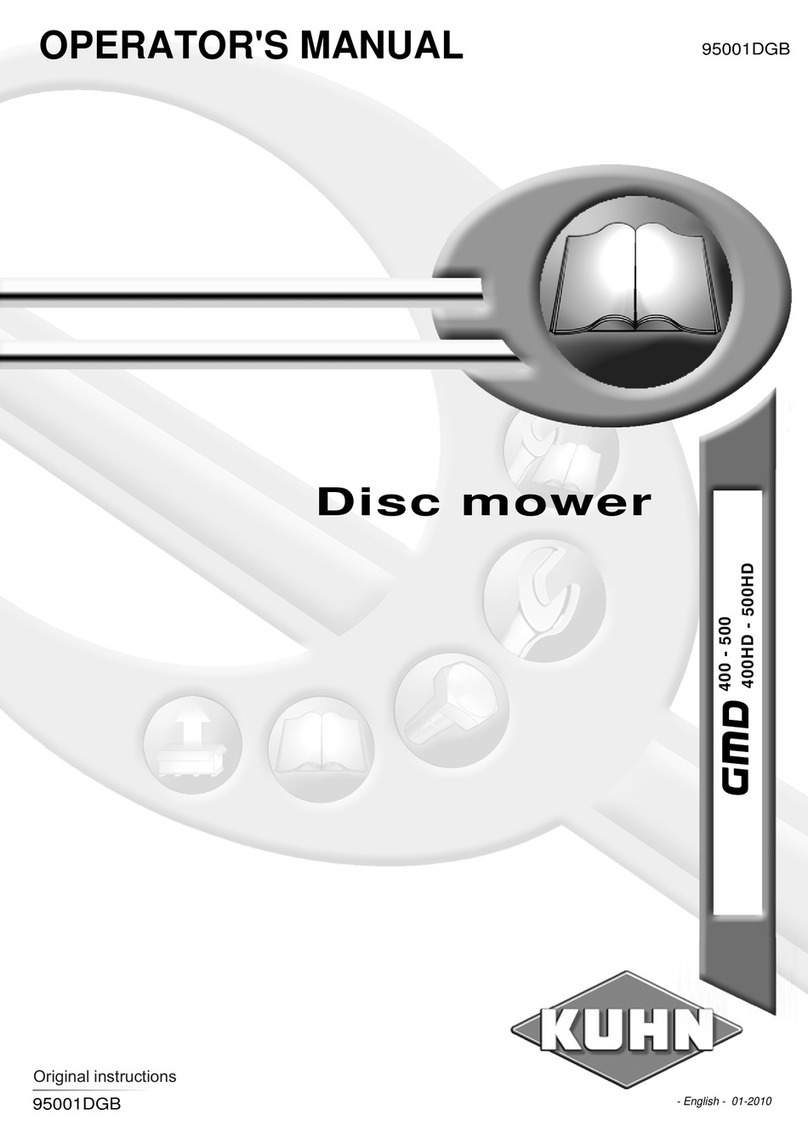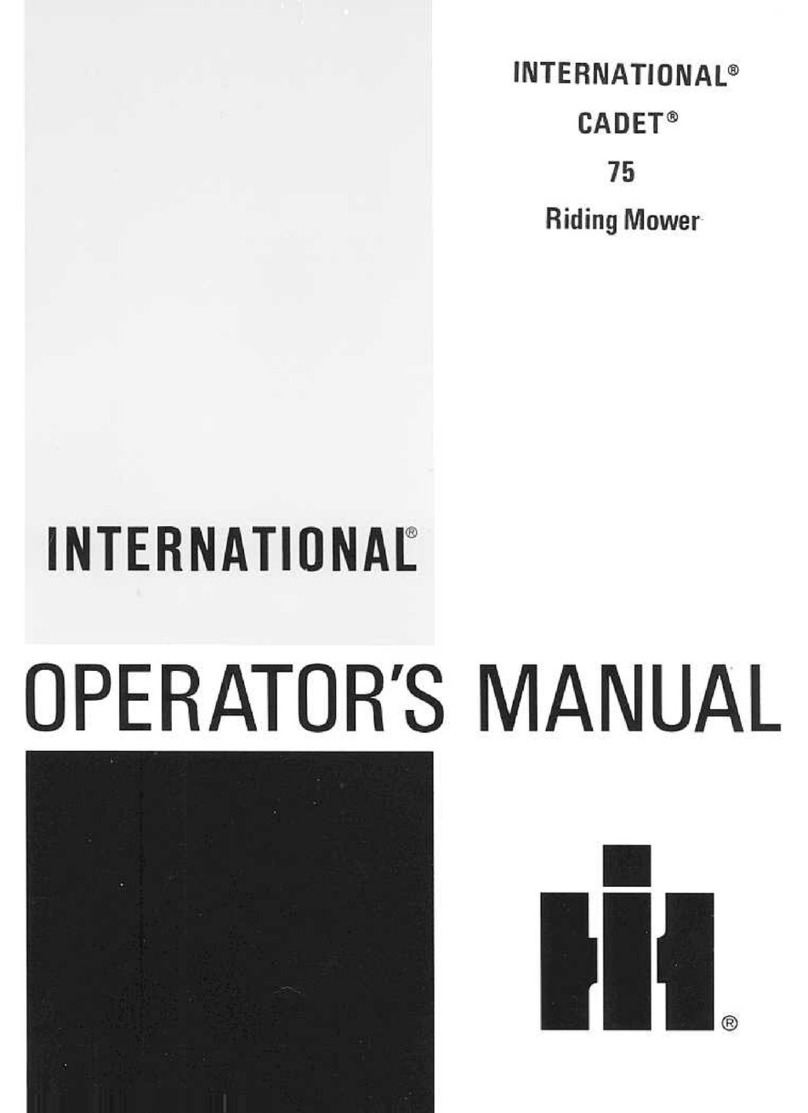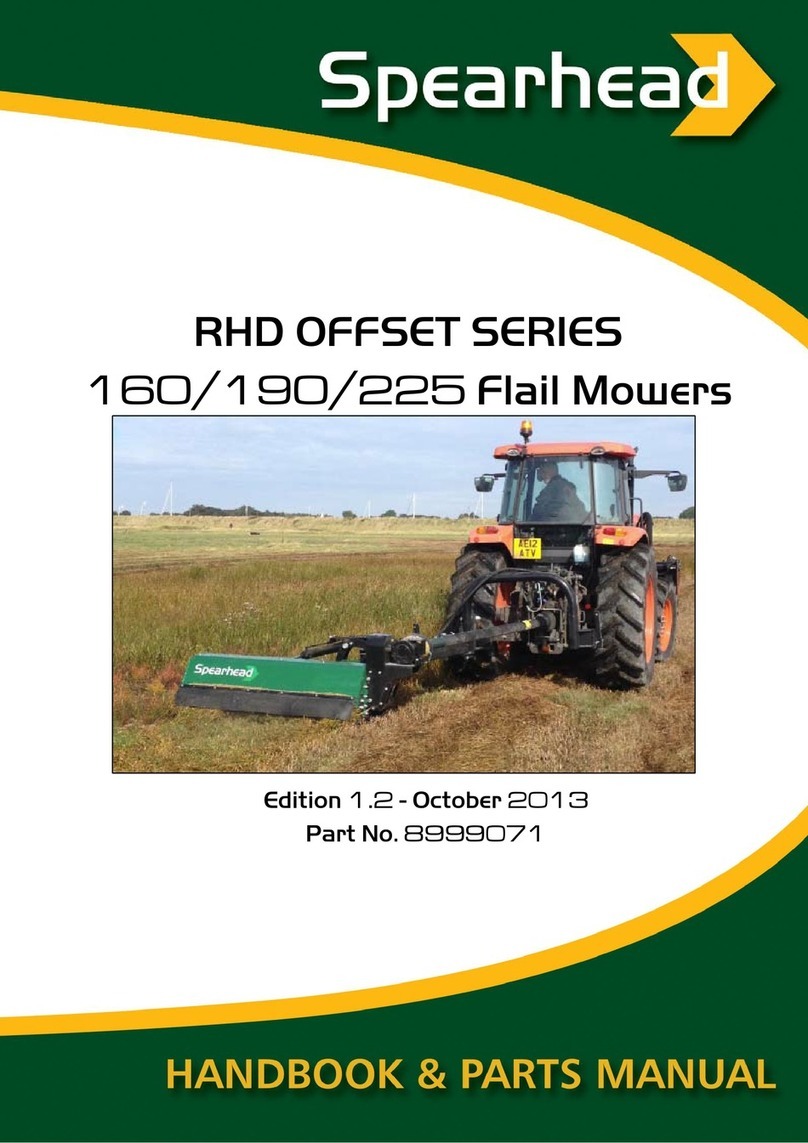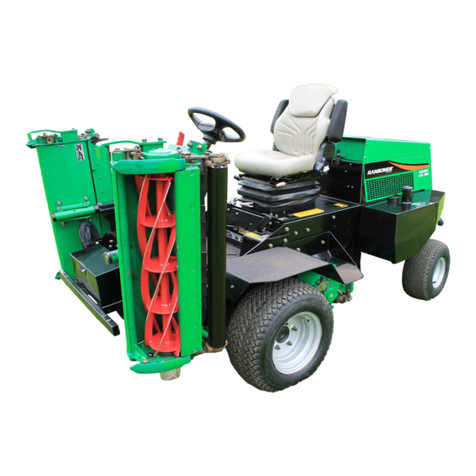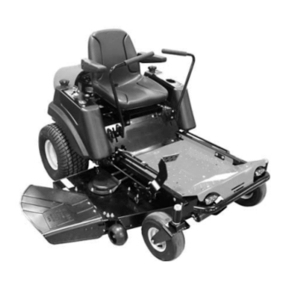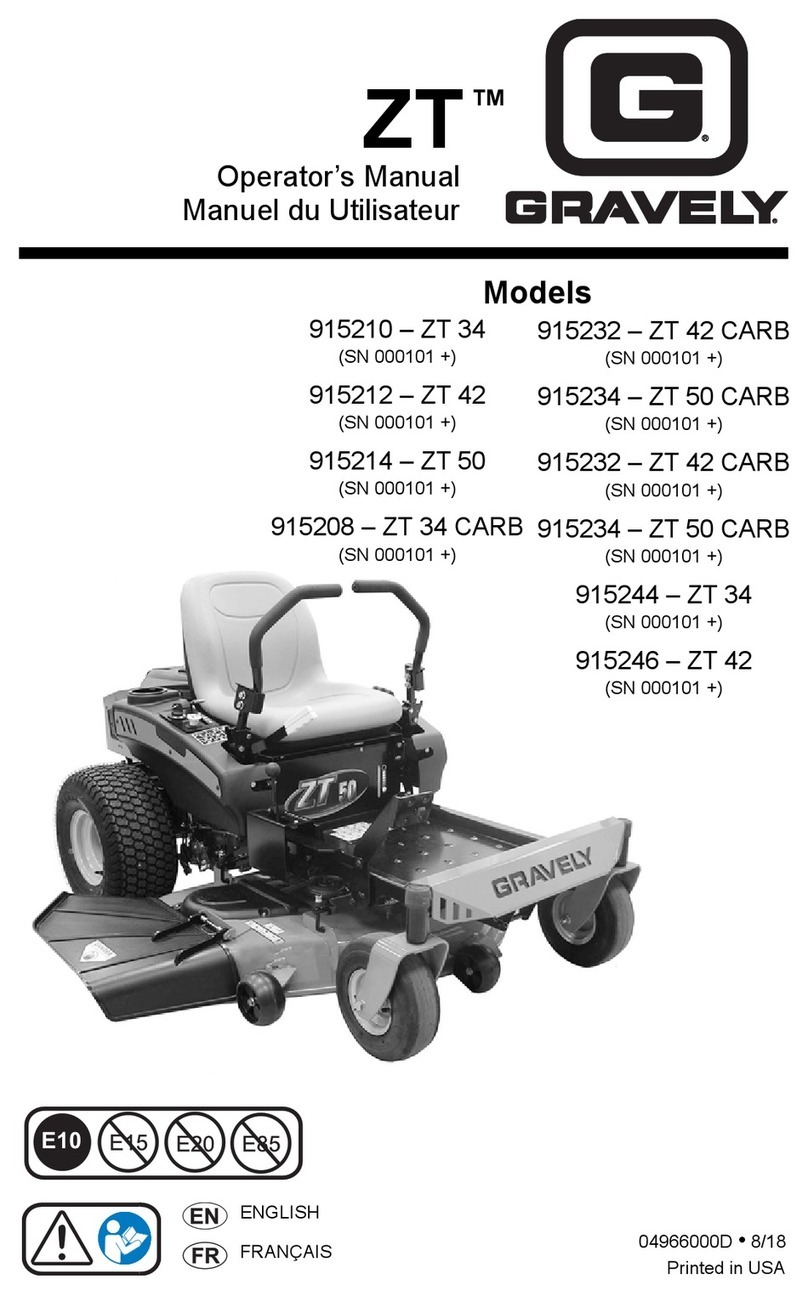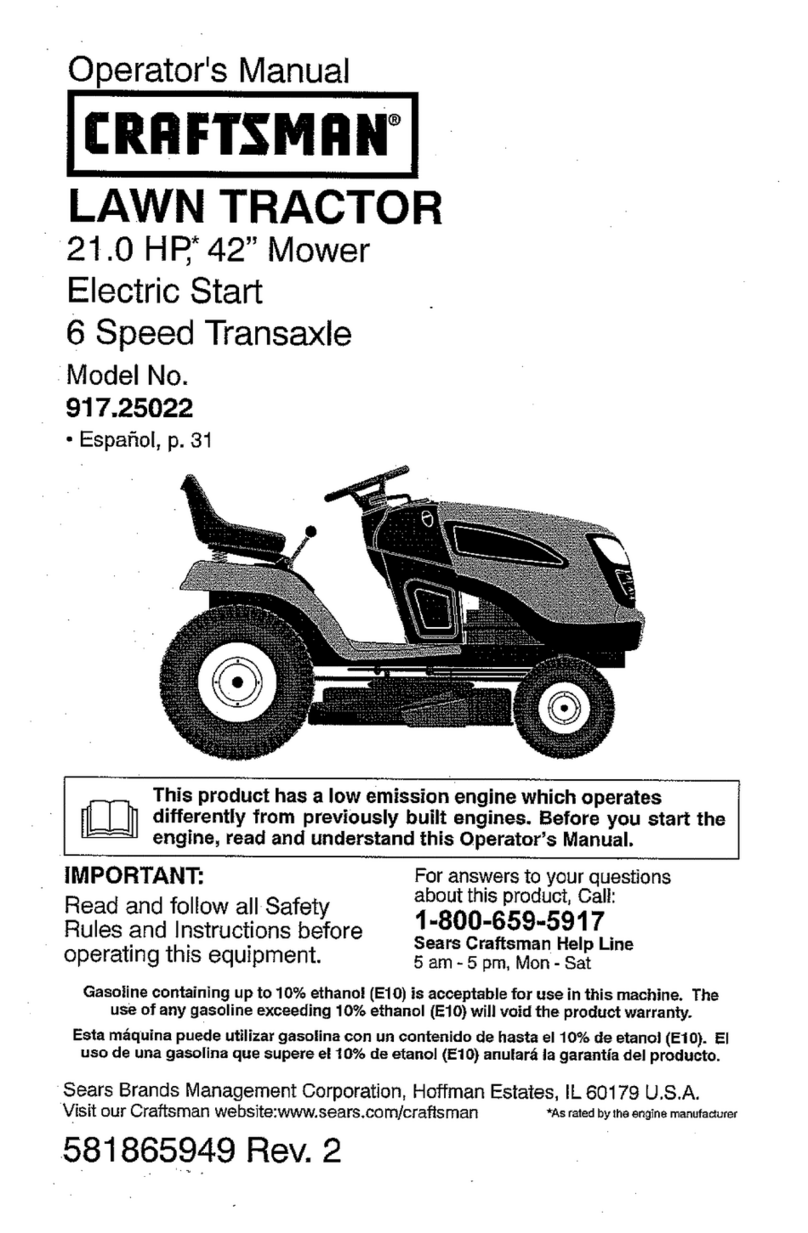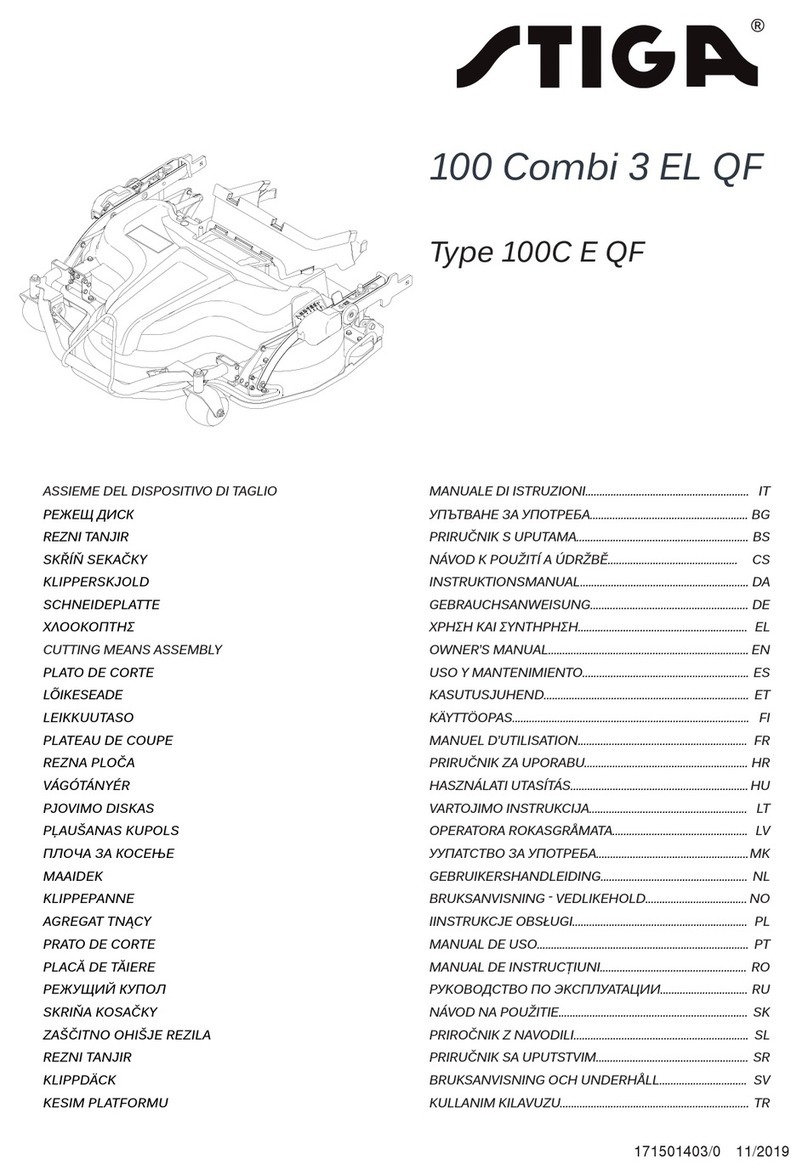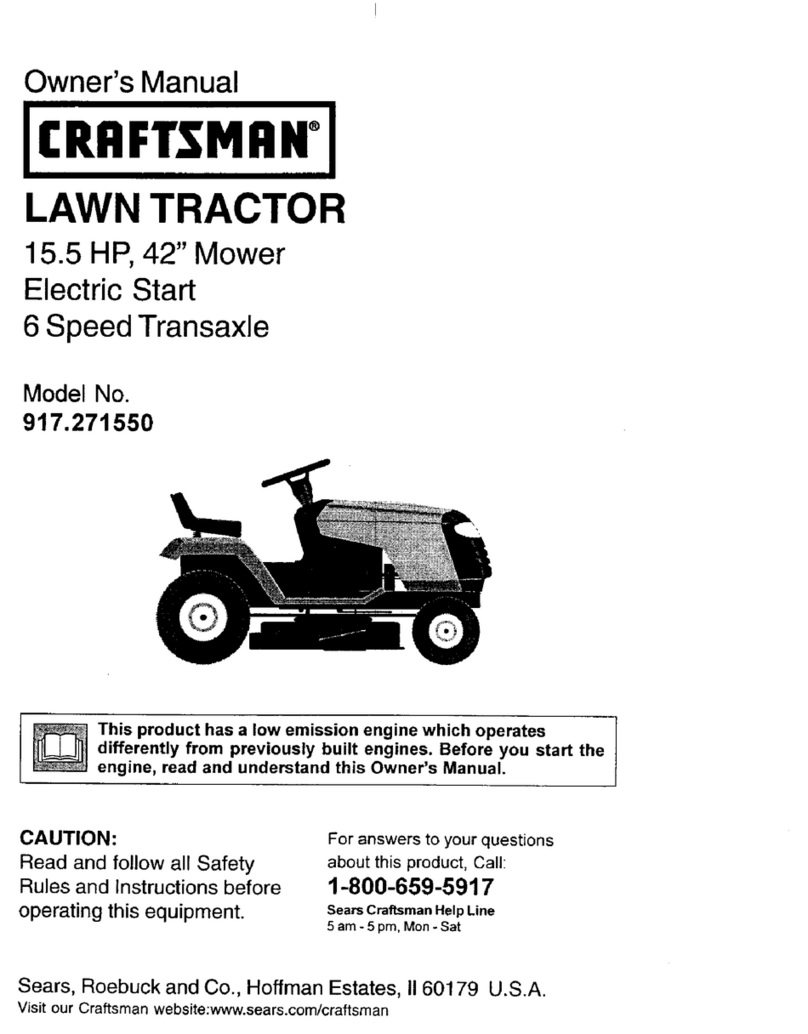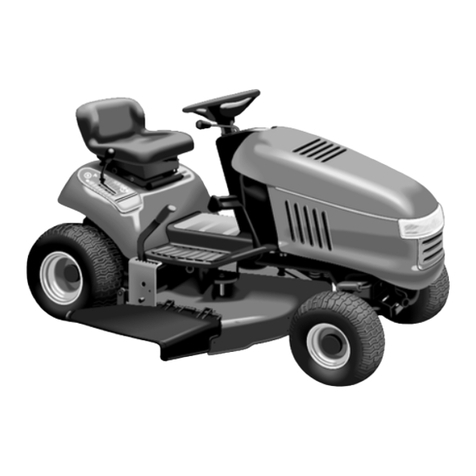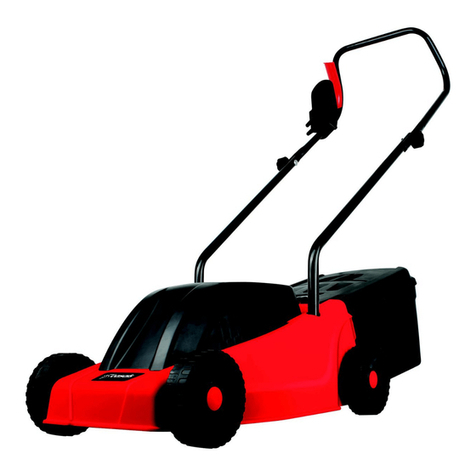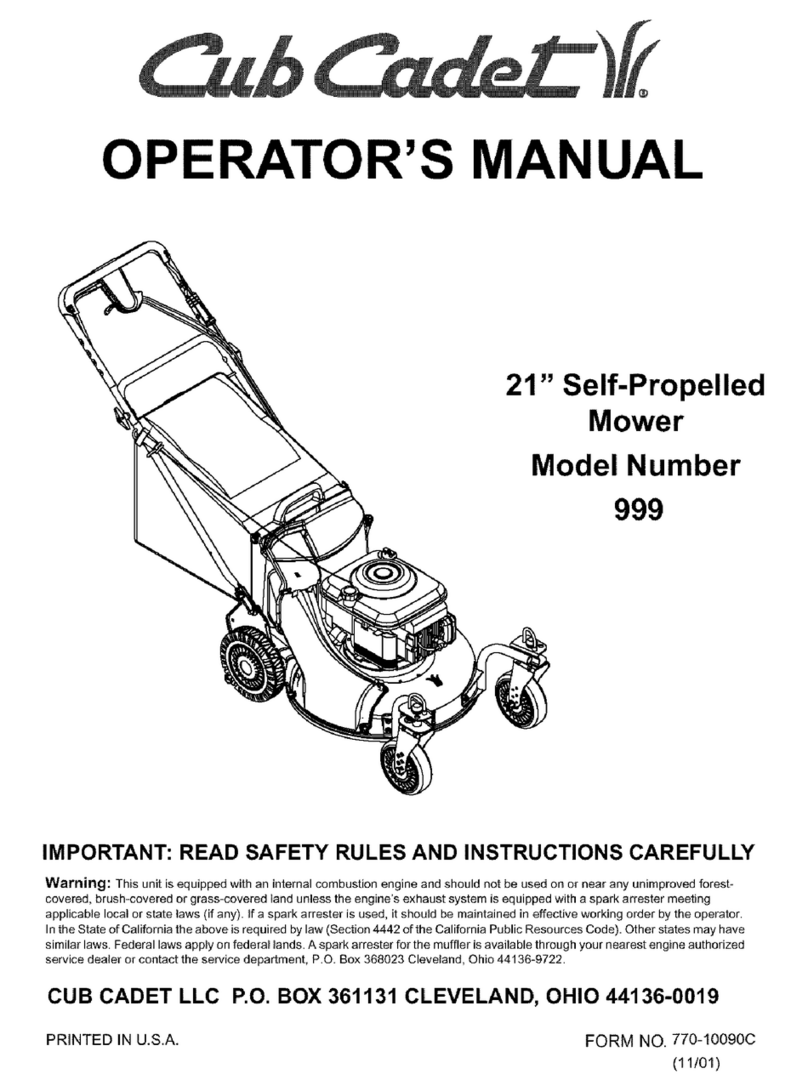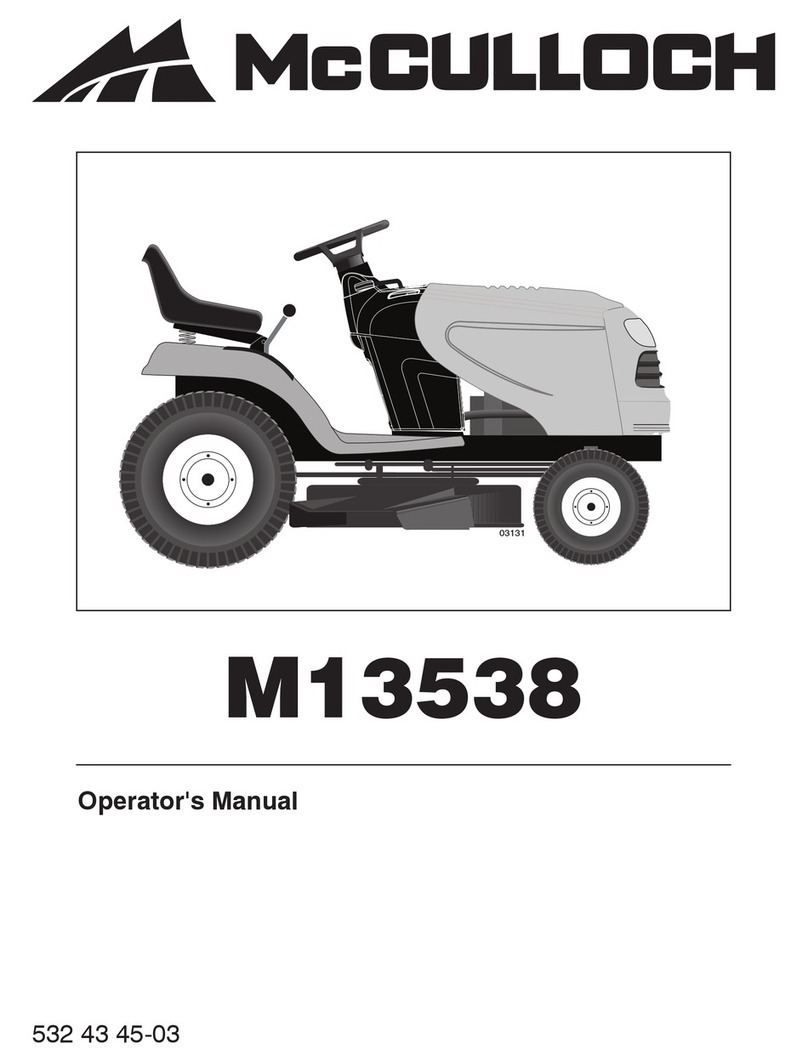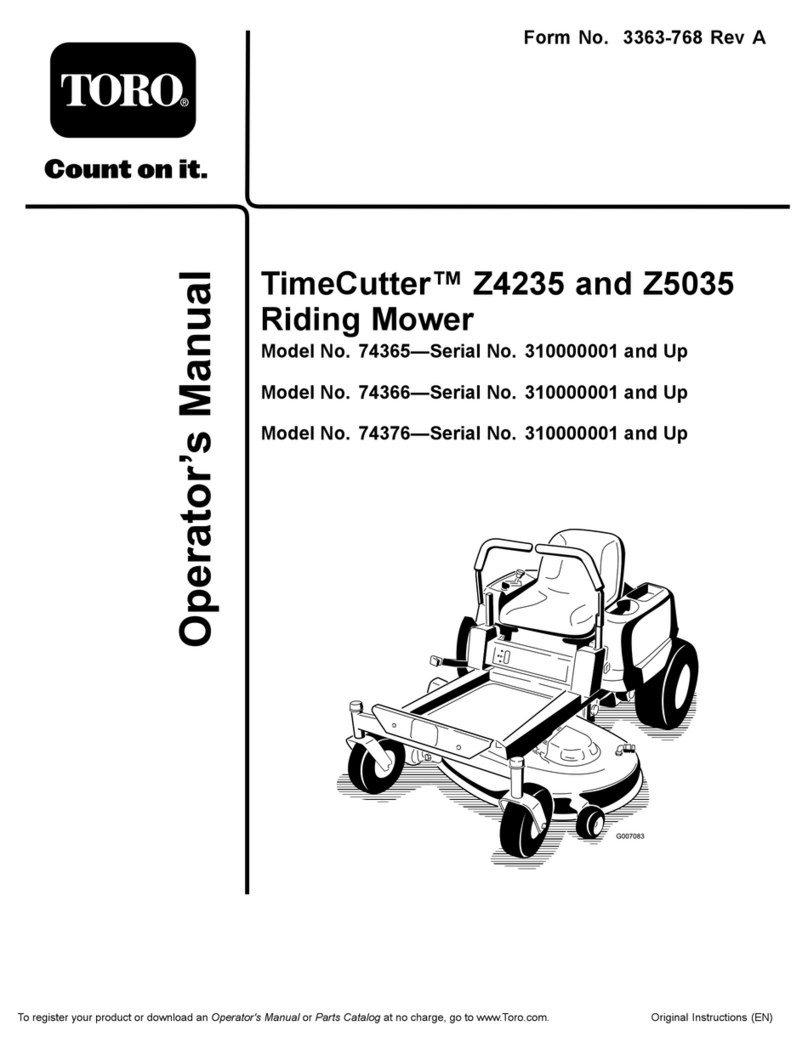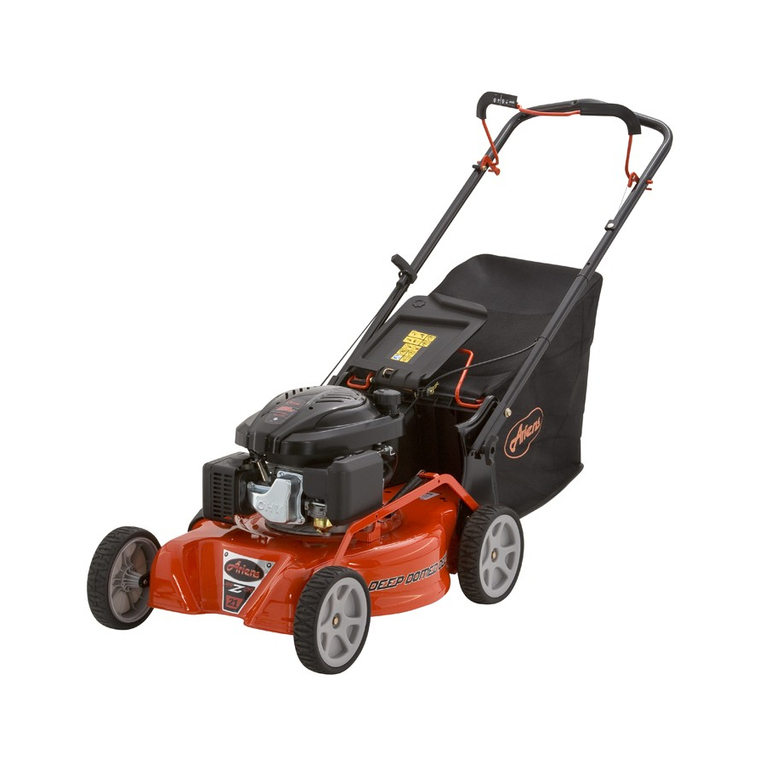
GB - 9
Checking Wheel Hardware
• A serious accident could occur
causing serious injury if wheel
hardware is not tight.
• Check wheel hardware tightness often
during the first 100 hours of operation.
• Wheel hardware must be tightened to
specified torque using the proper
procedure anytime it is loosened.
Wear Appropriate Clothing
• Always wear safety goggles, or safety
glasses with side shields, and a hard
hat when operating the machine.
• Wear close fitting clothing and safety
equipment appropriate for the job.
• While mowing, always wear
substantial footwear and long
trousers. Do not operate the
equipment when barefoot or wearing
open sandals.
• Wear a suitable protective device such
as earplugs. Loud noise can cause
impairment or loss of hearing.
Maintenance and Storage
• Never operate machine in a closed
area where dangerous carbon
monoxide fumes can collect.
• Disengage drives, lower implement,
lock parking brake, stop engine and
remove key or disconnect spark plug
(for gas engines). Wait for all
movement to stop before adjusting,
cleaning or repairing.
• Clean grass and debris from cutting
units, drives, mufflers, and engine to
help prevent fires. Clean up oil or fuel
spillage.
• Let engine cool before storing and do
not store near flame.
• Shut off fuel while storing or
transporting. Do not store fuel near
flames or drain indoors.
• Park machine on level ground. Never
allow untrained personnel to service
machine. Understand service
procedure before doing work.
• Use jack stands or lock service latches
to support components when required.
Securely support any machine
elements that must be raised for
service work.
• Before servicing machine or
attachment, carefully release pressure
from any components with stored
energy, such as hydraulic components
or springs.
• Release hydraulic pressure by
lowering attachment or cutting units to
the ground or to a mechanical stop
and move hydraulic control levers
back and forth.
• Disconnect battery or remove spark
plug (for gas engines) before making
any repairs. Disconnect the negative
terminal first and the positive last.
Reconnect positive first and negative
last.
• Use care when checking blades. Wrap
the blades or wear gloves, and use
caution when servicing them. Only
replace blades. Never straighten or
weld them.
• Keep hands, feet, clothing, jewelry and
long hair away from moving parts. If
possible, do not make adjustments
with the engine running.
• Charge batteries in an open well
ventilated area, away from spark and
flames. Unplug charger before
connecting or disconnecting from
battery. Wear protective clothing and
use insulated tools.
• Keep all parts in good working
condition and all hardware tightened.
Replace all worn or damaged decals.
• Check grasscatcher components and
the discharge guard frequently and
replace with manufacturer’s
recommended parts, when necessary.
Grasscatcher components are subject
to wear, damage, and deterioration
which could expose moving parts or
allow objects to be thrown.
• Keep all nuts and bolts tight, especially
blade attachment bolts, to be sure the
equipment is in safe working condition.
• Check brake operation frequently.
Adjust and service as required.
• On multi-bladed machines, take care
as rotating one blade can cause other
blades to rotate.
Avoid High Pressure Fluids
• Hydraulic hoses and lines can fail due
to physical damage, kinks, age, and
exposure. Check hoses and lines
regularly. Replace damaged hoses
and lines.
• Hydraulic fluid connections can loosen
due to physical damage and vibration.
Check connections regularly. Tighten
loose connections.
• Escaping fluid under pressure can
penetrate the skin causing serious
injury. Avoid the hazard by relieving
pressure before disconnecting
hydraulic or other lines. Tighten all
connections before applying pressure.
• Search for leaks with a piece of
cardboard. Protect hands and body
from high pressure fluids.




















